Looking for how to save your geraniums this fall and overwinter them with ease? Believe it or not, even though geraniums are often treated as annuals, they are actually a perennial – and can be easily and safely overwintered to enjoy their beauty again next year!
Geraniums are one of the most popular blooming flowers of all for gardeners to plant and enjoy during the warm spring and summer months. One thing is for sure, their bright blooms are one of the best at standing up to the hot summer sun and heat.
Even more, not only are they great for growing in containers, pots, and window boxes – but they perform incredibly well when growing directly in flower beds too. That is, until the harsh, cold weather arrives to take them out.
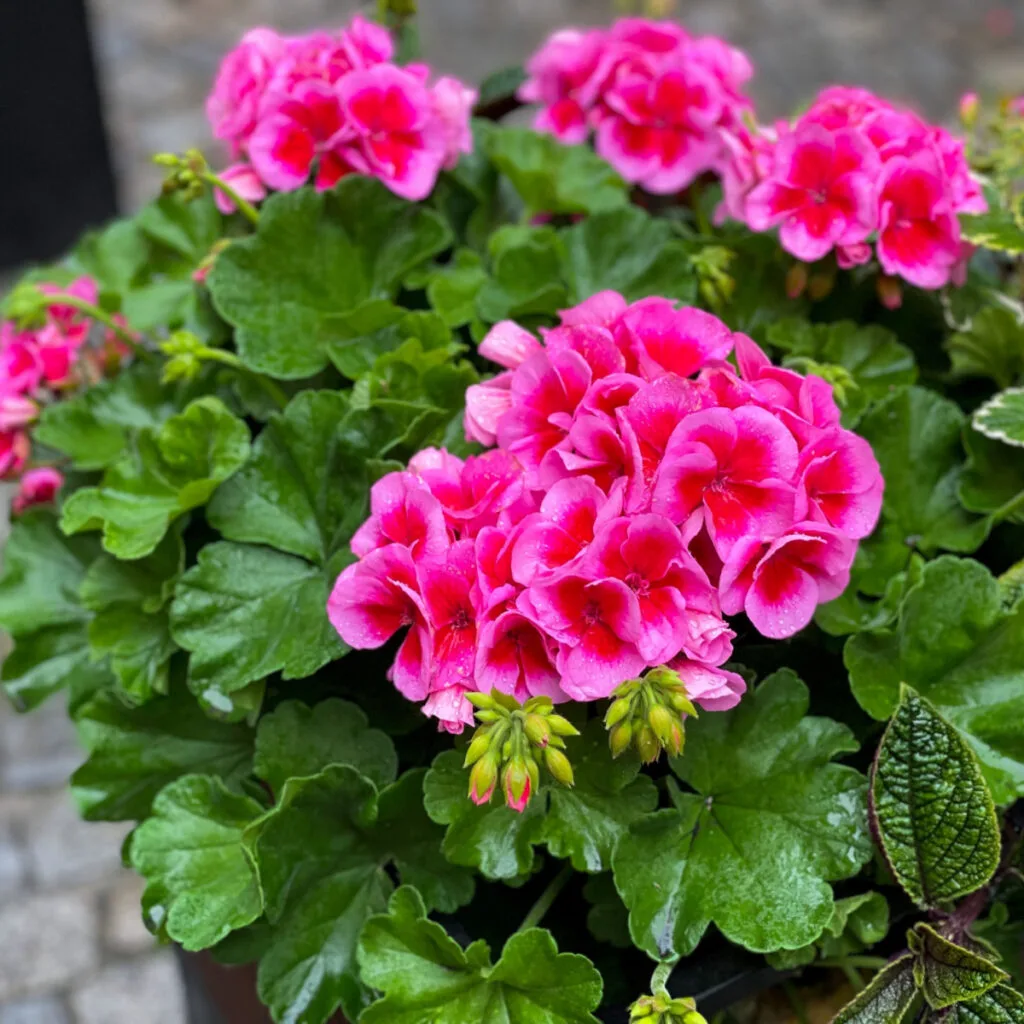
Unfortunately, when left outside late in the fall, these cold-sensitive plants die off after the first hard frost or freeze. But unlike annuals such as marigolds, petunias and zinnias – geraniums don’t have to suffer the same season ending fate. At least not when you bring them inside to keep them alive.
With just a little extra care, geraniums can be kept all winter long without the need for much attention – which can be a great way to save on plants every spring. With that in mind – here is a look at three simple methods that all work with ease to save geraniums over the winter.
How To Overwinter Geraniums – Save Your Geraniums This Fall!
Types Of Geraniums
Before overwintering, it’s important to understand there are two main types of geraniums – hardy and non-hardy varieties. Both types are considered to be perennials, but they need to be handled differently when overwintering.
Hardy geraniums feature smaller blooms that aren’t in clusters. These geraniums are able to withstand being outside year-round without any additional care. In fact, hardy geraniums can overwinter in growing zones 3 through 8 right where they grow.
All that is really needed to protect hardy geraniums is a thick coat of mulch in the fall. You can cut back plants after they die back and then apply two to three inches above the plant’s base. For more on growing hardy varieties, see: “Hardy Geraniums – An All-Season Blooming Perennial For Your Landscape!”
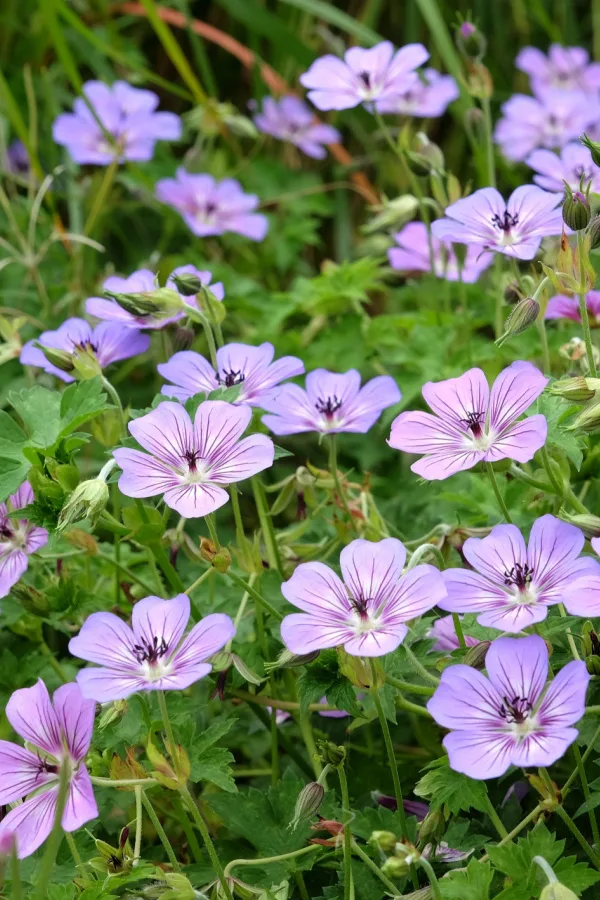
While they still add nice color to the landscape, one thing is for sure, hardy geraniums don’t have the show-stopping flowering appeal that non-hardy varieties do. And that is exactly why non-hardy geraniums are so popular to grow every year.
Non-hardy geraniums simply ooze with big flower power. But to save these beauties – it takes a bit more work in the fall. The good news is that it’s easier than you could ever imagine!
Saving Non-Hardy Geraniums – How To Overwinter Geraniums In The Fall
Non-hardy geraniums are the most common type of geranium you encounter at garden centers and stores. They feature the iconic long stems and big flower clusters normally associated with the title “geraniums.”
One of the most important parts of keeping non-hardy geraniums alive during the winter months is to start the process BEFORE the plants encounter overly cold temperatures. Waiting until a hard freeze or frost has occurred will leave you with dead plants. Plain and simple!
Geraniums become very fragile in cold weather. Their foliage, blooms, and stems all contain a large amount of moisture that will freeze if exposed to overly cold temperatures. Once the plant material freezes, it’s too late to save the plants.
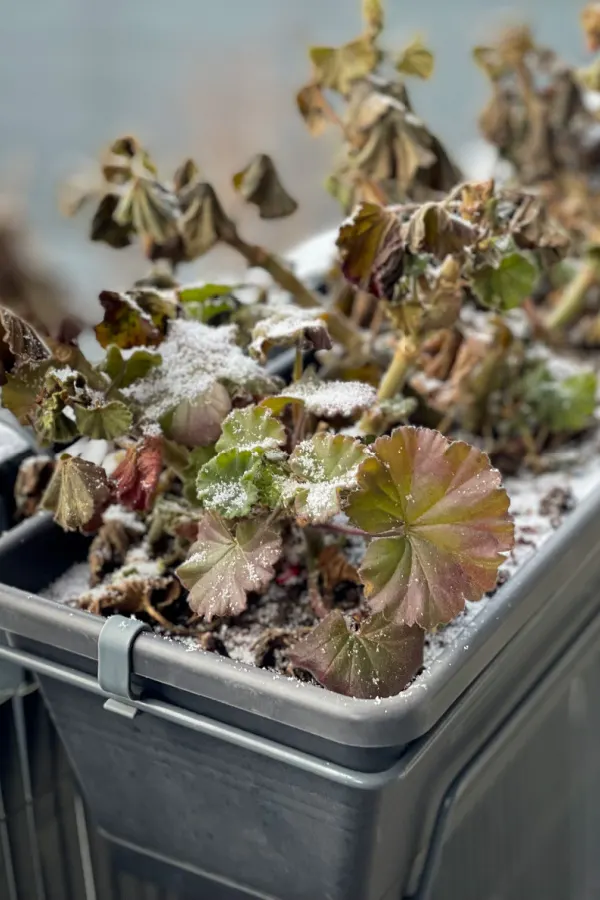
In order to save non-hardy geraniums, you must bring them inside before the threat of frost arrives. The sooner you make the move in the fall to prepare them for overwintering indoors, the easier it will be for the plants to adjust.
There are actually three different ways to overwinter geraniums. All work quite well, but the choice really comes down to how much space you have and what works best for your situation.
Save Bare Root Cuttings – How To Overwinter & Save Geraniums In The Fall
The first method for keeping non-hardy geraniums alive in the winter is great for plants that grow in flowerbeds or directly in the ground. You might also want to choose this method for your potted geraniums if you are short on space within your home.
In early fall or long before the threat of a frost arrives, dig up the geraniums or remove them from their containers. Brush off any attached soil to expose the roots. Then, cut off the top of the plant so it ends up being about one-half to a third of its original size. Be careful to leave the roots intact.
As long as the roots are dry, place the plants into a large brown paper bag or cardboard box, root side up. Store them in a dark, cool location such as a basement or insulated shed or garage.
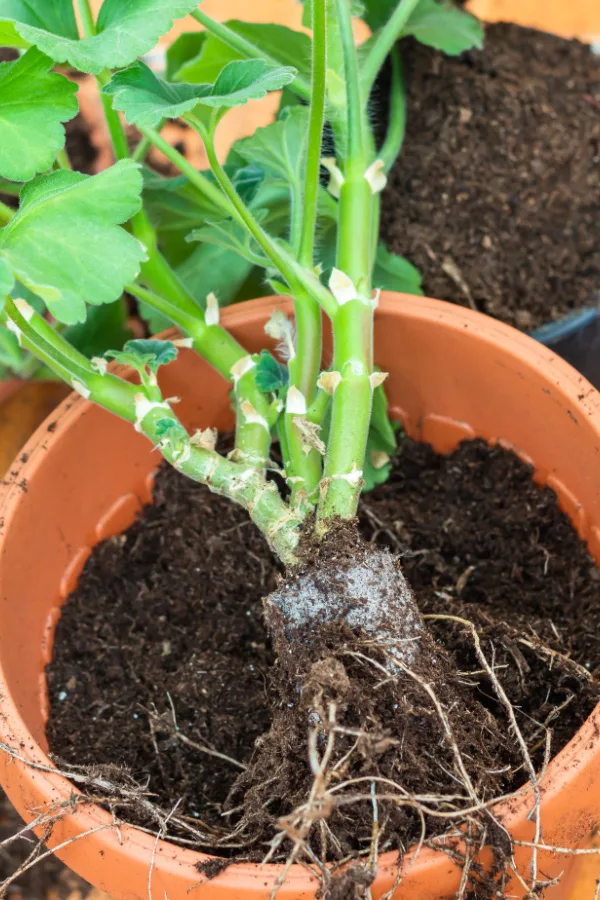
Before spring arrives, pot up the bare root plants and put them in a sunny room or window. Use a good quality all-purpose potting soil to give the roots the best shot at revival. Water the plants until they are slightly moist.
New growth should start appearing within a couple of weeks. When the weather warms up, you can then replant the bare root plants directly in the soil or back in containers to continue growing and flowering all season long.
Treating Geraniums Like Houseplants – How To Overwinter & Save Geraniums In The Fall
If your non-hardy geraniums are already growing in containers or pots, keeping them alive during the winter can be an easy process by treating them as houseplants. All you have to do is move them indoors!
Start by giving your plants a quick washing before moving inside. Spray the soil and foliage off well to help dislodge any attached critters or insects. Also, remove any dead or brown foliage as well before moving inside to give them a fresh start.
Non-hardy geraniums will grow well indoors as long as they are given plenty of light and warmth – just like normal houseplants. If you have a bright, Southern-facing window, place the geranium in that spot so it can receive bright, indirect light. If you don’t have adequate lighting, put the plants under grow lights. (Affiliate Product Link: Full-Spectrum Grow Light)

Always avoid placing geraniums in a location that is drafty. In addition, keep them away from heater vents, fireplaces and high heat sources. Both drafts or excessive heat can injure plants quickly, making it tough for them to survive indoors.
Allowing Geraniums To Go Dormant – How To Overwinter & Save Geraniums In The Fall
If you choose not to grow your non-hardy geraniums as houseplants, you can instead let them go dormant over the wintertime. Essentially, you will be storing the geraniums in their containers in a cool, dark location. They will stop growing until the weather warms back up again.
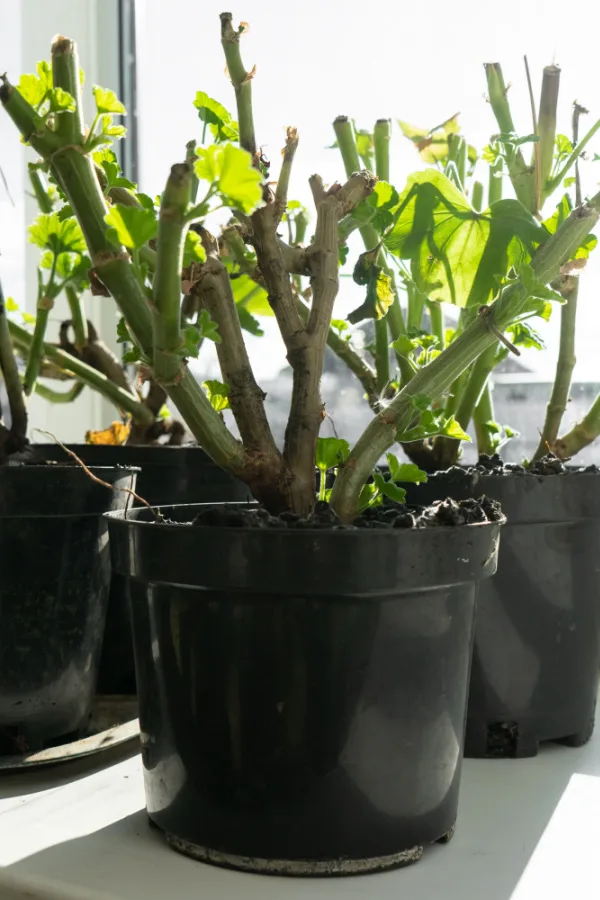
Begin by cutting the geranium down to about half its original size. Next, you need to find a safe location to overwinter the plant.
A cool, damp basement is a great place for keeping non-hardy geraniums alive over the winter months. Another option is an unheated shed or garage, as long as it still has insulation or some warmth. Again, you don’t want the temperatures to drop below freezing or the geranium will die.
Cover the geranium with a brown paper bag to help prevent light from reaching the foliage. Wait until the soil of the geranium is fairly dry before covering it to avoid mold.
Maintaining Dormant Geraniums – How To Overwinter & Save Geraniums In The Fall
Check dormant, non-hardy geranium every two weeks to ensure the leaves are not drying out too much. If this is happening, slightly water the soil to give the plant just a little bit of moisture. Do not saturate the soil.
Once spring arrives, you can remove the cover and take the plant outside. Start by moving it to a protected area and begin to water it like normal, watching for new growth. As soon as the weather allows, you can move the geranium to its permanent location for the summer. At this point, a good dose of all-purpose fertilizer will help it revive quickly.

Any one of these three simple methods is perfect for keeping your geraniums alive over the winter – allowing them a second chance at blooming and being beautiful when spring arrives again!
Follow Our Facebook Page For Great Gardening Tips And Advice! This Is My Garden Facebook Page
This Is My Garden is a garden website created by gardeners, for gardeners. Jim and Mary Competti have been writing gardening, DIY and recipe articles and books and speaking for over 15 years from their 46 acre Ohio farm. They publish three articles every week, 52 weeks a year. Sign up today to follow via email, or follow along!
